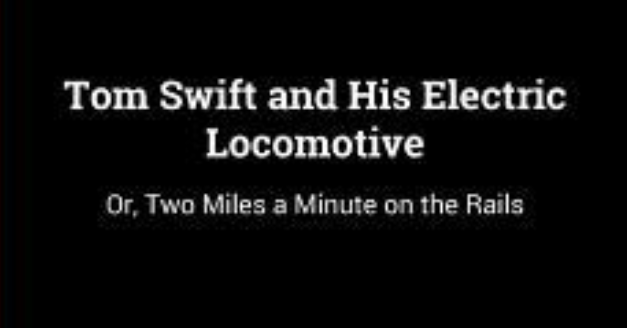CHAPTER XX — Tom Swift and His Electric Locomotive
byCHAPTER XX – Tom Swift and His Electric Locomotive unfolds against the backdrop of a narrowly avoided disaster. A potential wreck involving Express No. 28 is prevented thanks to a timely delay and an urgent message from the Half Way operator. The warning reaches Hammon Station just in time, and proper signals are set to avert a collision. As the Hercules 0001 barrels down a steep grade at full speed, Tom’s steady hand and the locomotive’s responsive controls prove crucial. The situation could have ended in catastrophe, but precision and calm transform panic into triumph. Cheers erupt from the crew as the train slows safely, and the crisis passes.
Ned Newton, visibly shaken, admits he has no desire to repeat the experience. The force of the descent and the proximity to disaster leave him uneasy. But Tom, ever the inventor, sees something different. Rather than fear, he feels opportunity. The incident sparks an idea rooted in prevention. Tom proposes a wireless communication system that allows engineers to instantly report emergencies to stations both ahead and behind. While controlling nature isn’t always possible, responding effectively can make the difference. Tom explains that while no locomotive is immune to mechanical failure or human error, clear and immediate communication can minimize the consequences dramatically.
His suggestion goes beyond theory. He begins sketching out how compact wireless sets could be integrated into the cab design without interfering with controls. The goal is not just efficiency but real-time networked awareness. A train in distress could now broadcast warnings within seconds, prompting nearby stations and trains to respond proactively. Alongside this, Tom plans to enhance braking systems by improving pressure modulation and feedback mechanisms. It’s not about avoiding speed—Tom respects power. It’s about pairing speed with safety. Mr. Bartholomew, head of the railway company, immediately sees the merit and pledges full support.
As engineers inspect Hercules 0001 post-run, they find the machine in excellent condition. Its structure held firm even under extreme strain. The feedback from the trial is overwhelmingly positive. Not only has the electric engine outperformed expectations on incline handling, but it has also shown resilience under emergency conditions. This elevates confidence in Tom’s design across the board. Discussions begin about scaling production and initiating more expansive testing on longer, more complex routes. Tom, however, doesn’t celebrate for long. He returns to the drawing board with fresh urgency. His focus is already on refining the innovations inspired by the near miss.
The chapter also touches on the emotional tone of innovation. Ned’s caution reflects the very human side of progress—concern for life, apprehension in the face of danger. Tom doesn’t dismiss it. Instead, he builds on it. He understands that invention must serve both the daring and the doubtful. Every engineer on the track deserves tools that make their jobs safer. That belief fuels his drive to ensure that Hercules 0001 becomes more than just fast—it becomes smart, connected, and secure.
Later that day, a smaller demonstration is held at the yard, showcasing some of the updates Tom begins prototyping. While the full wireless system isn’t in place yet, mock signals simulate how it might operate. Mr. Damon, ever supportive, repeats his favorite phrase—“Bless my safety lever!”—as he watches the mock-up unfold. Railroad staff from nearby towns begin asking when the system might be available. Some even ask if similar technology could assist in night freight operations. Tom takes note. He sees applications far beyond express runs.
As the chapter ends, optimism flows like current through copper. Tom’s invention has done more than perform—it has proven adaptable. He has shown that innovation isn’t just about boldness. It’s about listening, learning, and evolving. The Hercules 0001, once a marvel of mechanical design, is now becoming a platform for integrated safety and communication. And for Tom Swift, the future isn’t just electric. It’s connected.

